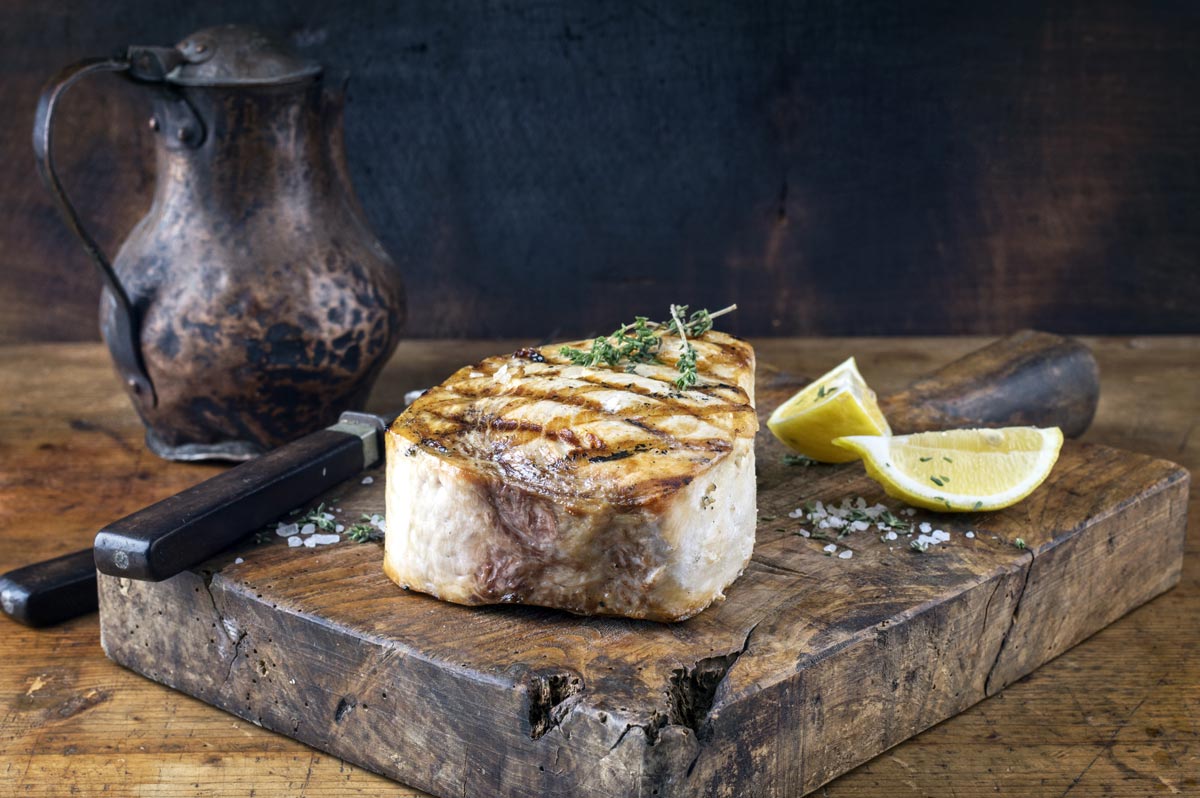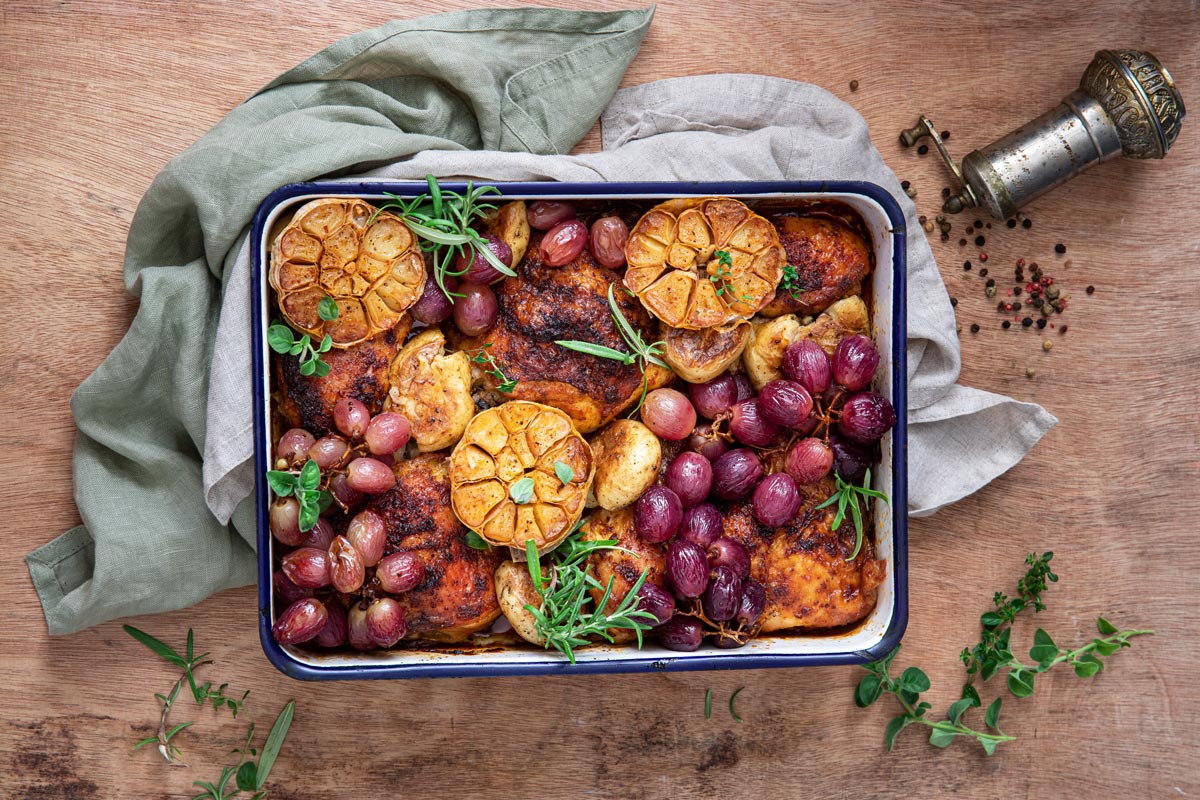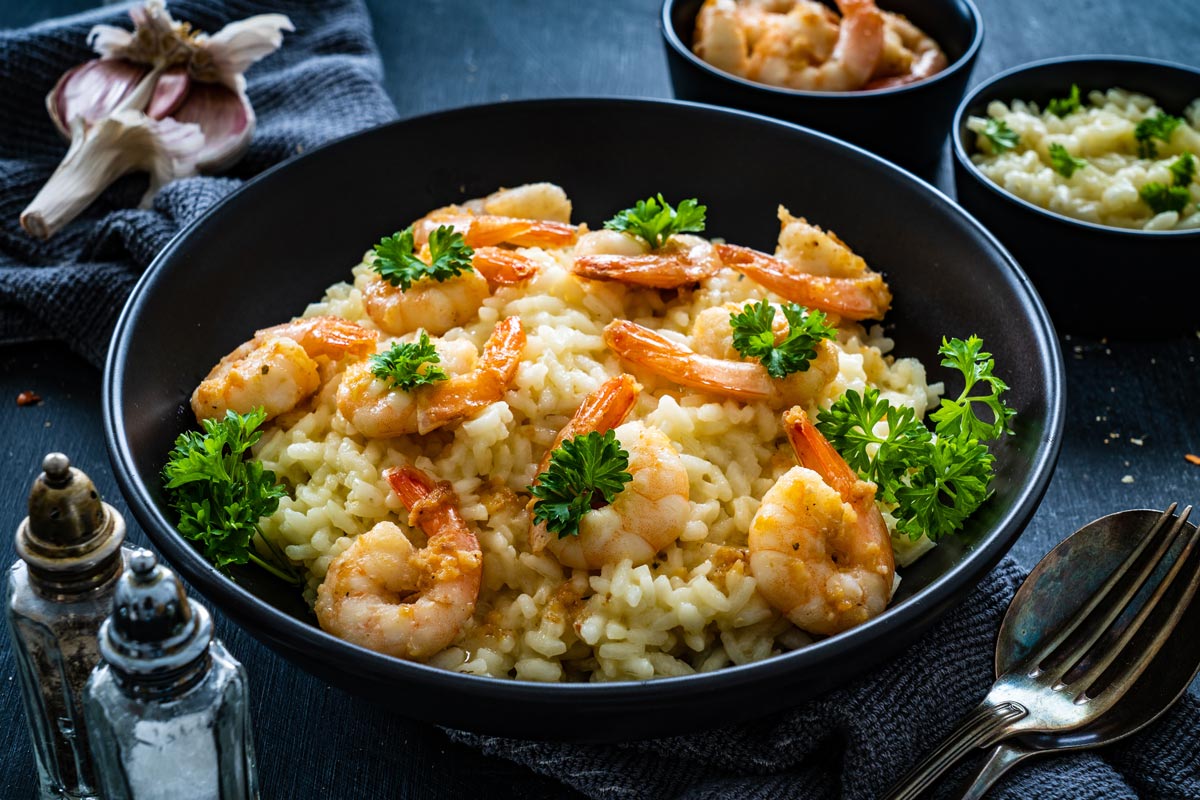This is an easy and flavorful entrée, and so healthy, too. Olive oil is rich in monounsaturated fats, and salmon delivers Omega-3 fatty acids. Win-win!
Ingredients
- 1 skinless side of salmon, 2 to 2 1/2 pounds
- Extra virgin olive oil
- Coarse salt (kosher or sea) and freshly ground black pepper
- 1 teaspoon whole fennel seeds
- 1 teaspoon whole cumin seeds
- 1 lemon
- 1/2 loosely packed cup of roughly chopped dill fronds
- 1/2 cup chopped walnuts
Directions
Step 1
Heat the oven to 325°F. Place the salmon in a shallow baking dish that fits it with at least 1 inch around all sides. Coat the salmon fillet (top and bottom) with olive oil, then season with salt and pepper.
Step 2
Bake until the salmon is opaque on the outside and an instant-read thermometer inserted into
the thickest part of the fillet reads 130°F for medium, 30 to 45 minutes, depending on the thickness of the fillet.
Step 3
Meanwhile, make the salsa verde: Toast the fennel and cumin seeds in a small dry skillet over medium heat until fragrant. Transfer to a mortar and crush to a rough powder (or crush the seeds with a heavy skillet on your cutting board). Finely grate the zest from the lemon into a bowl then halve and juice the lemon into the same bowl. Stir in the crushed spices, 2 tablespoons of olive oil, and the dill and walnuts. Season the salsa verde with salt and pepper.
Step 4
Remove the salmon from the oven and spoon the salsa verde all over the top of the salmon. Let the fillet rest for 5 minutes, then serve family-style straight from the baking dish.
Serves 4 to 6 — Recipe from latimes.com




